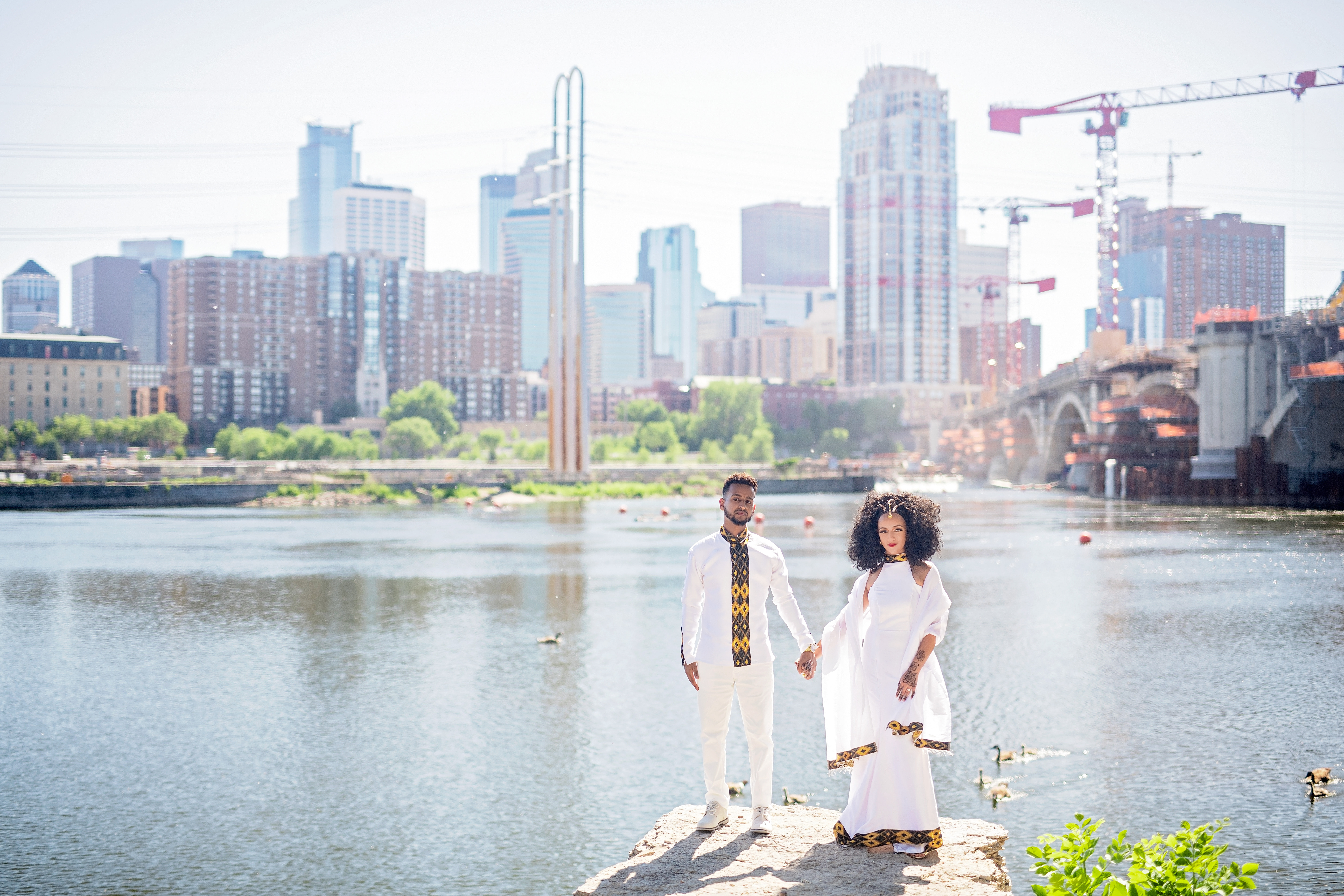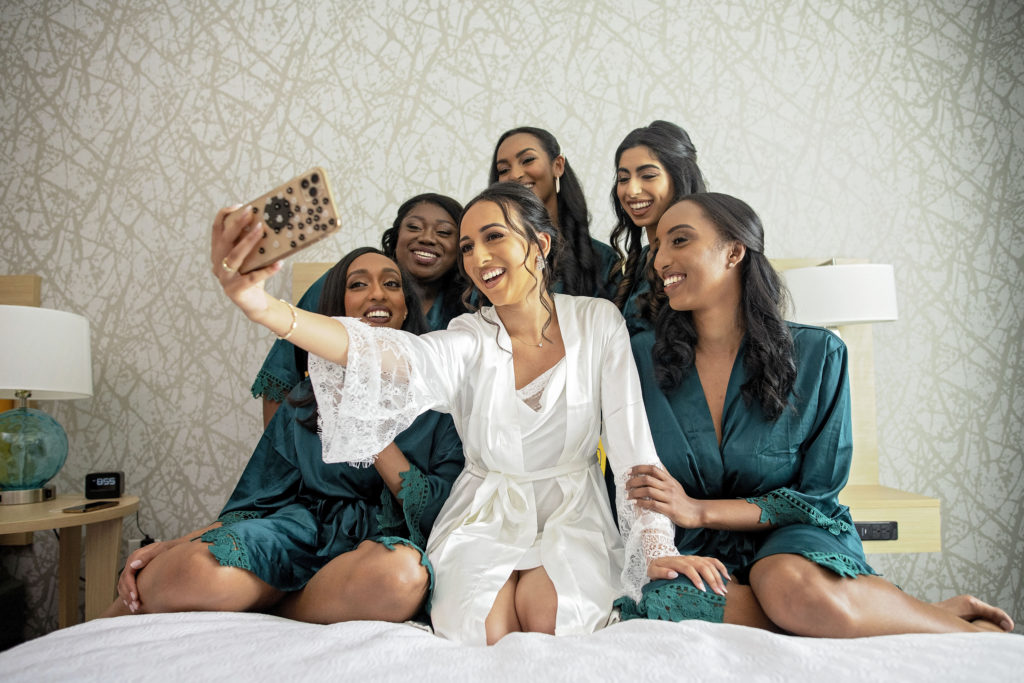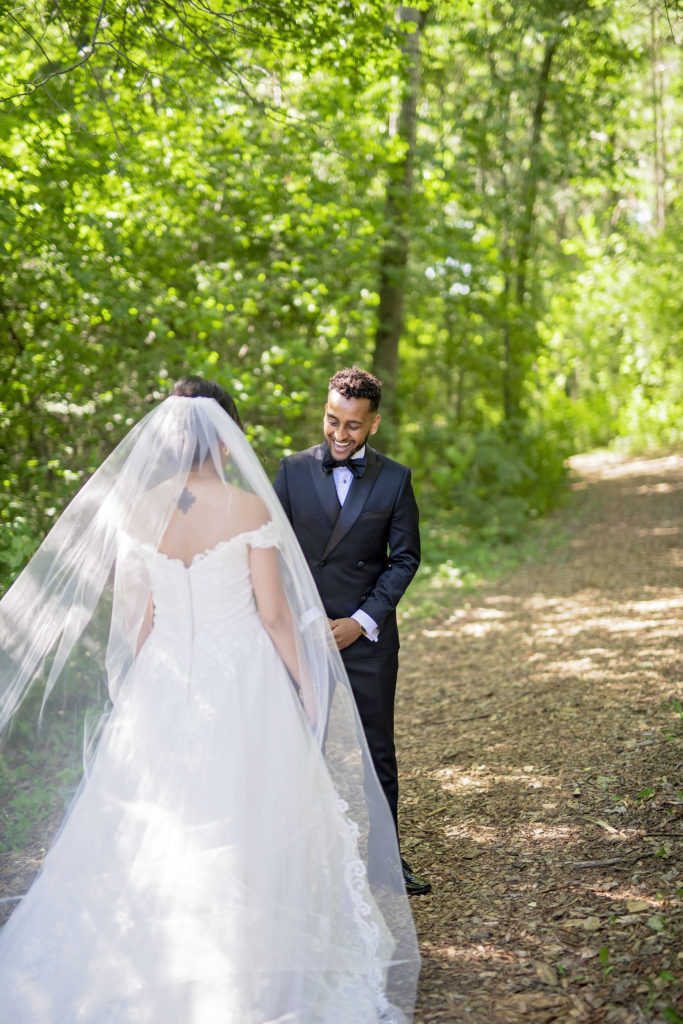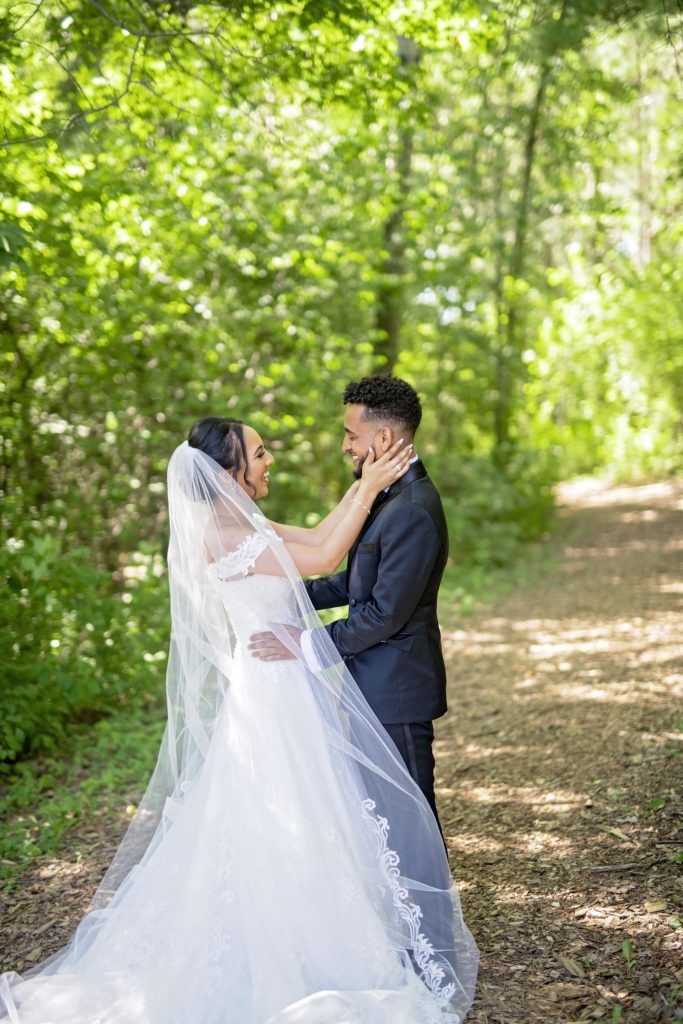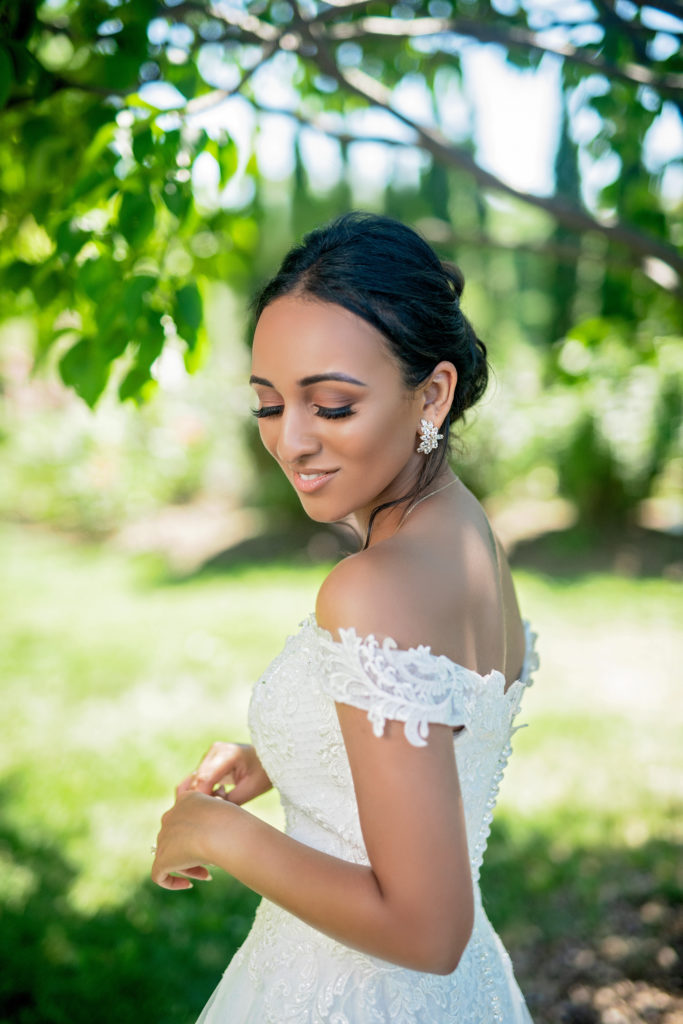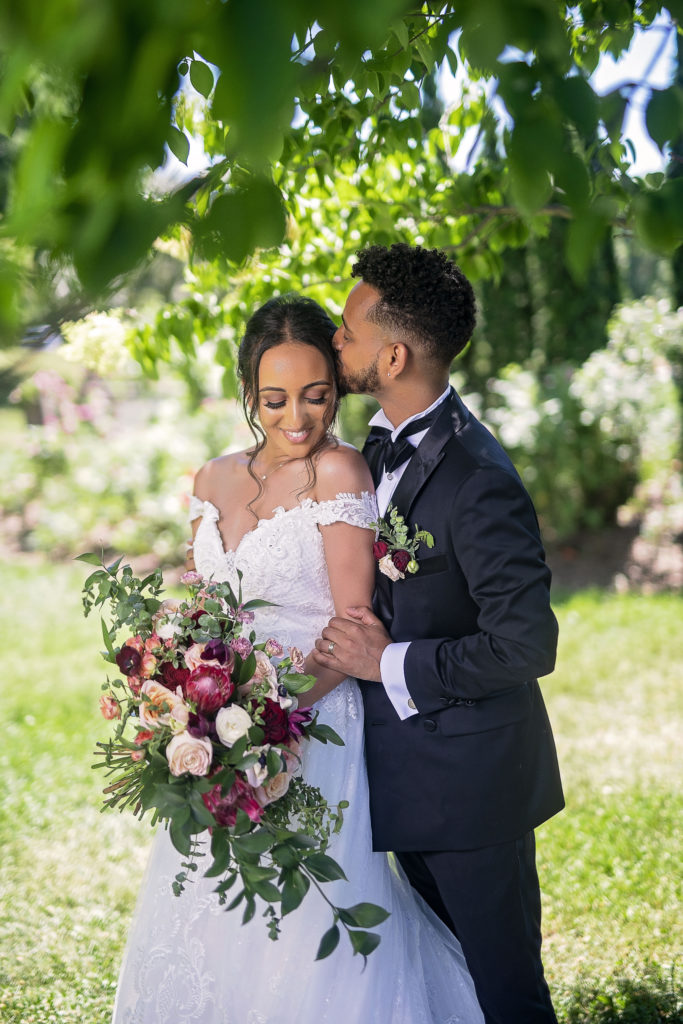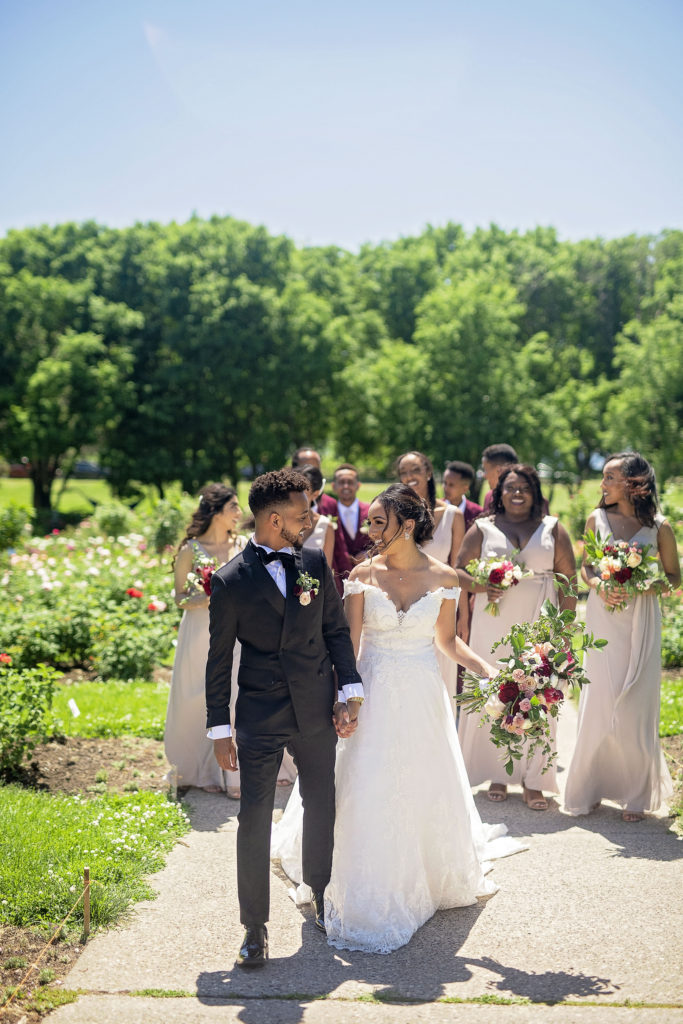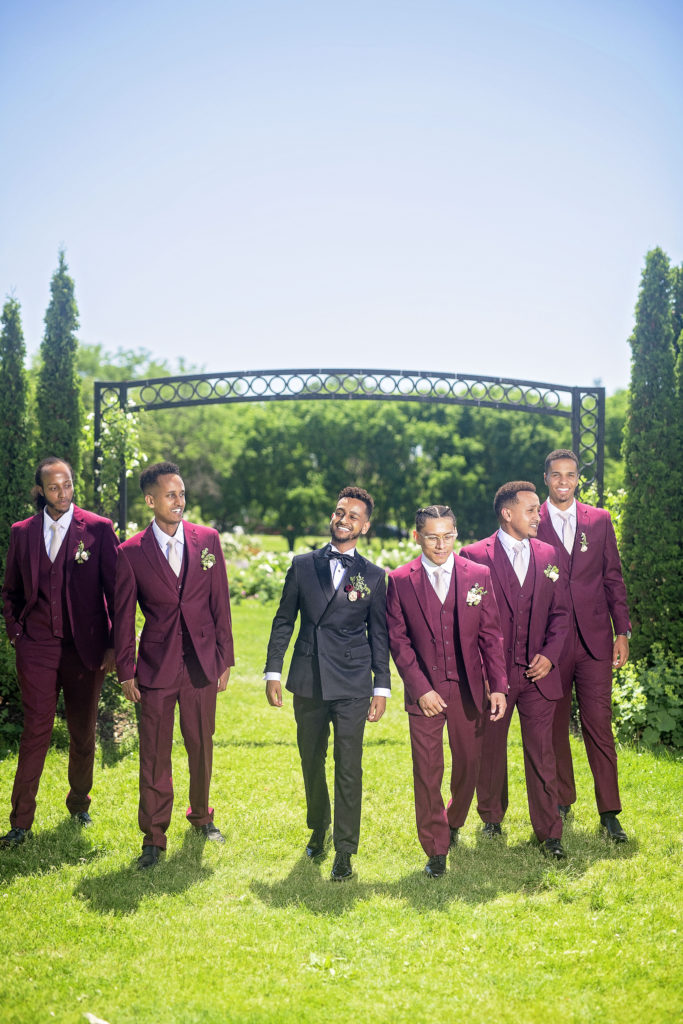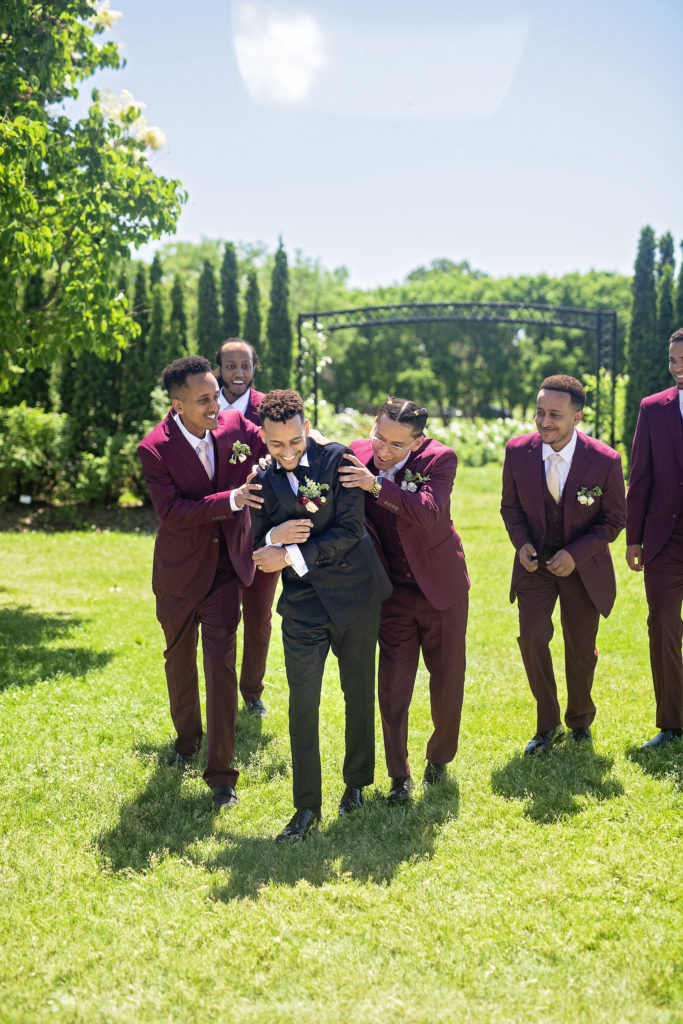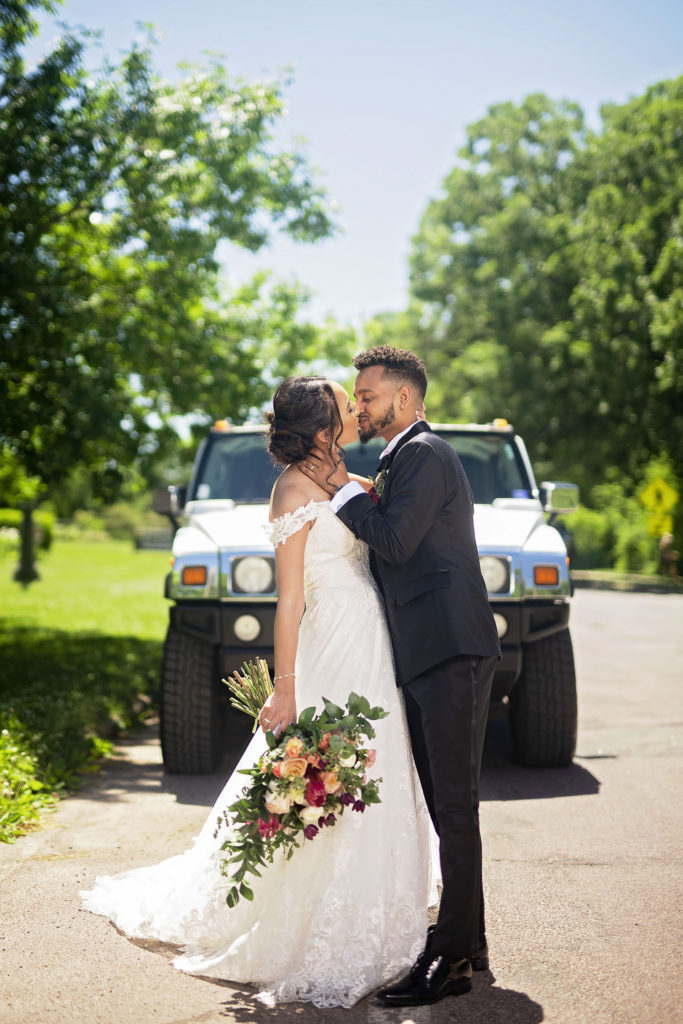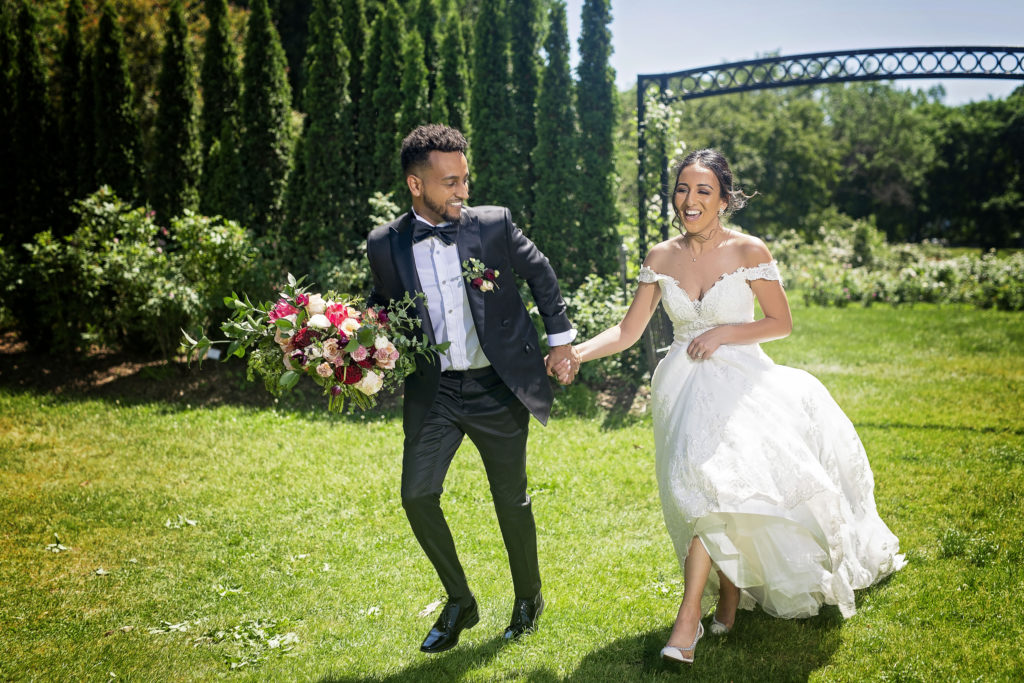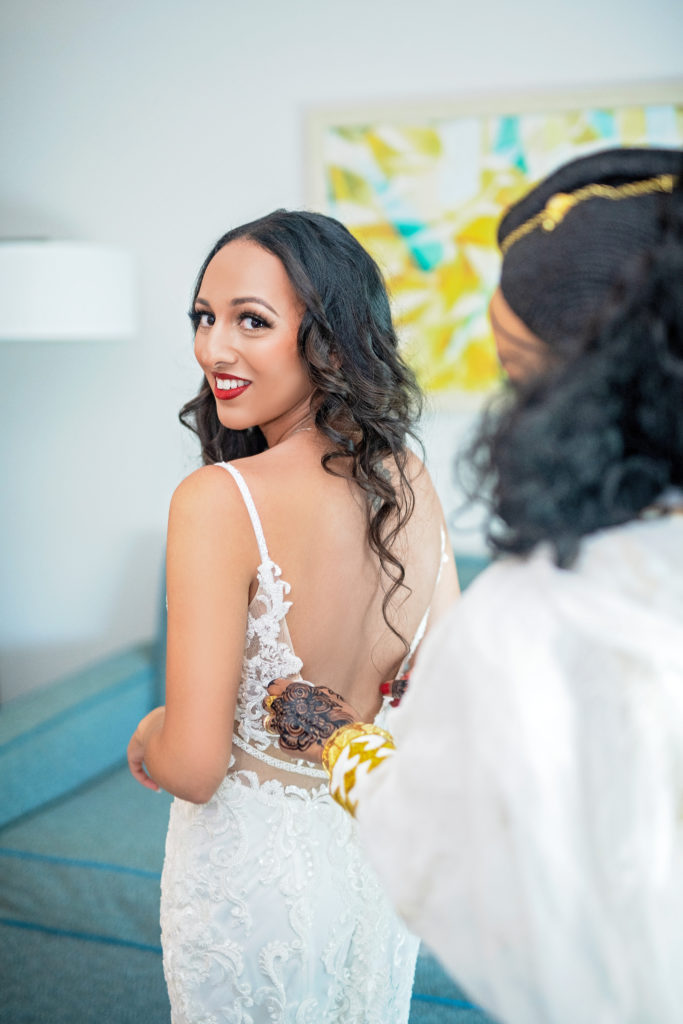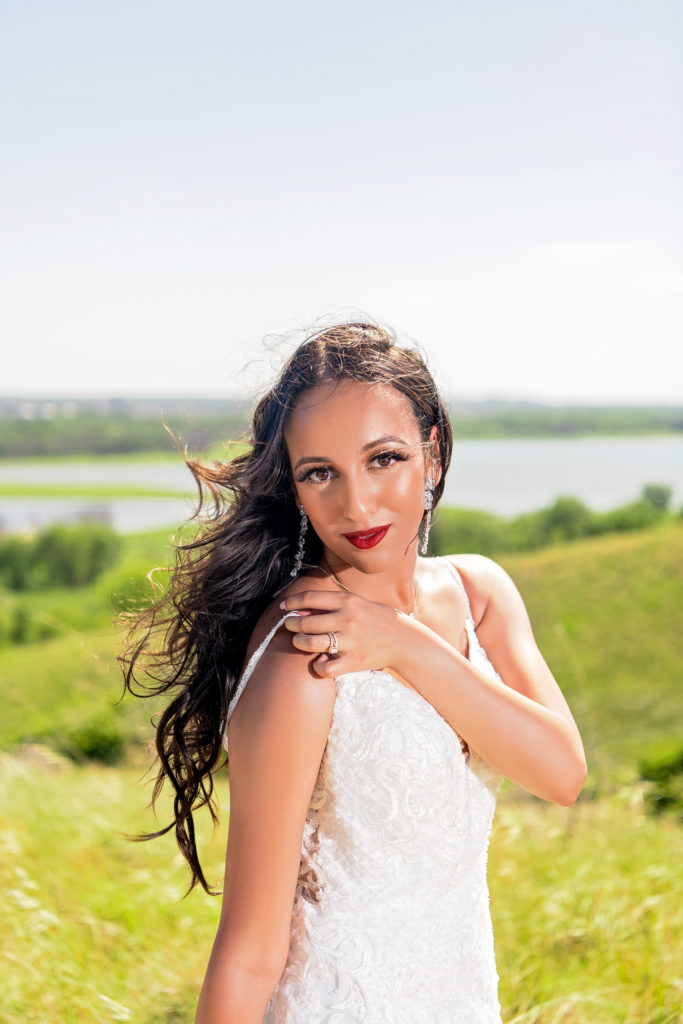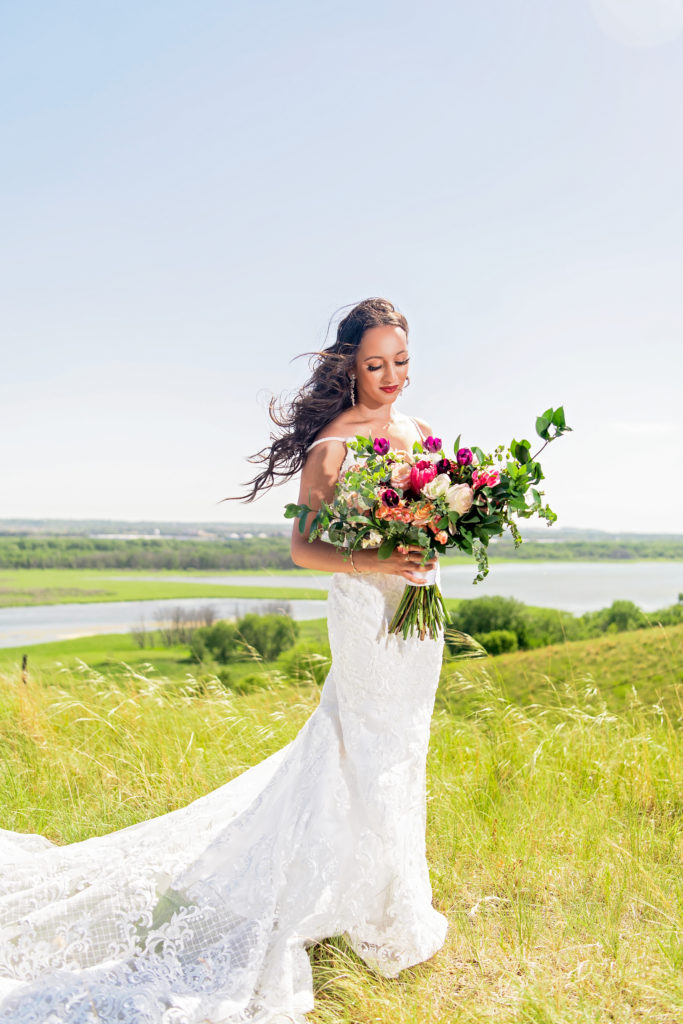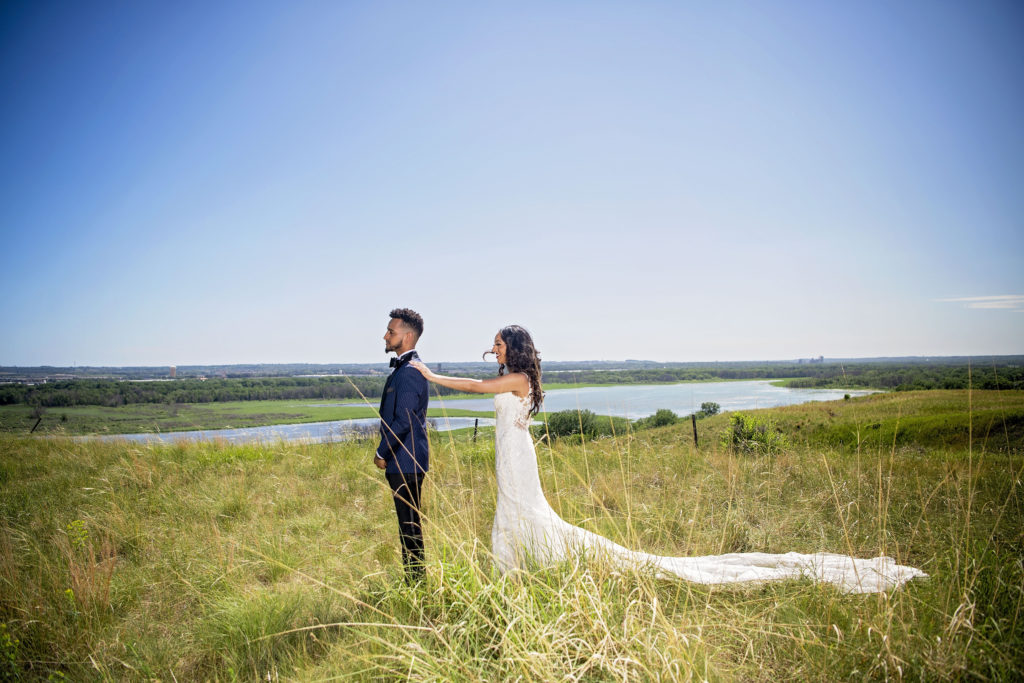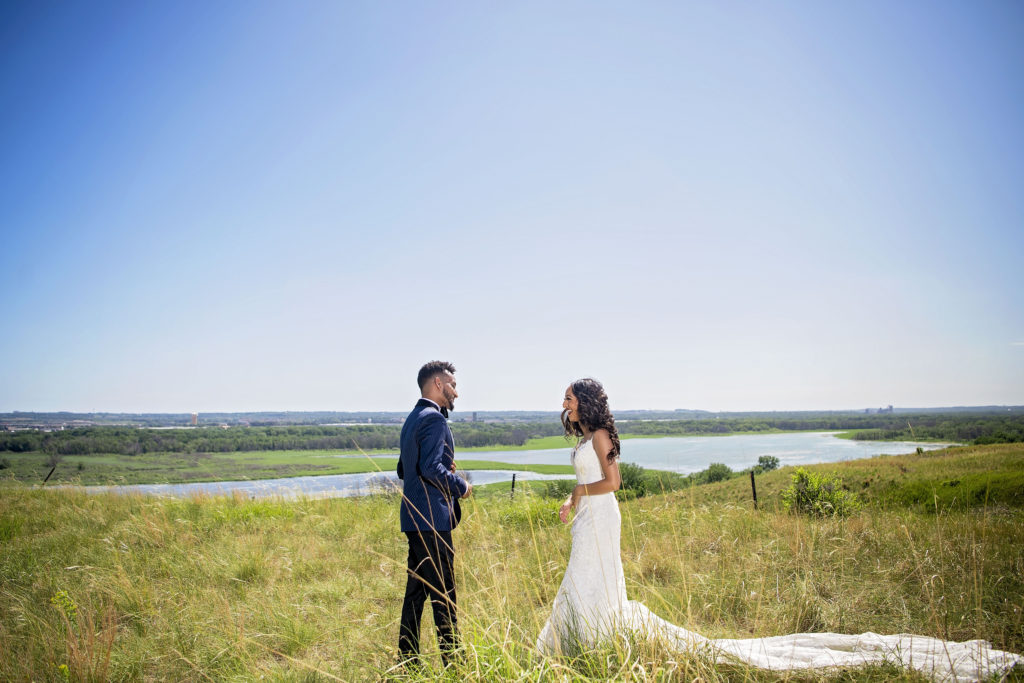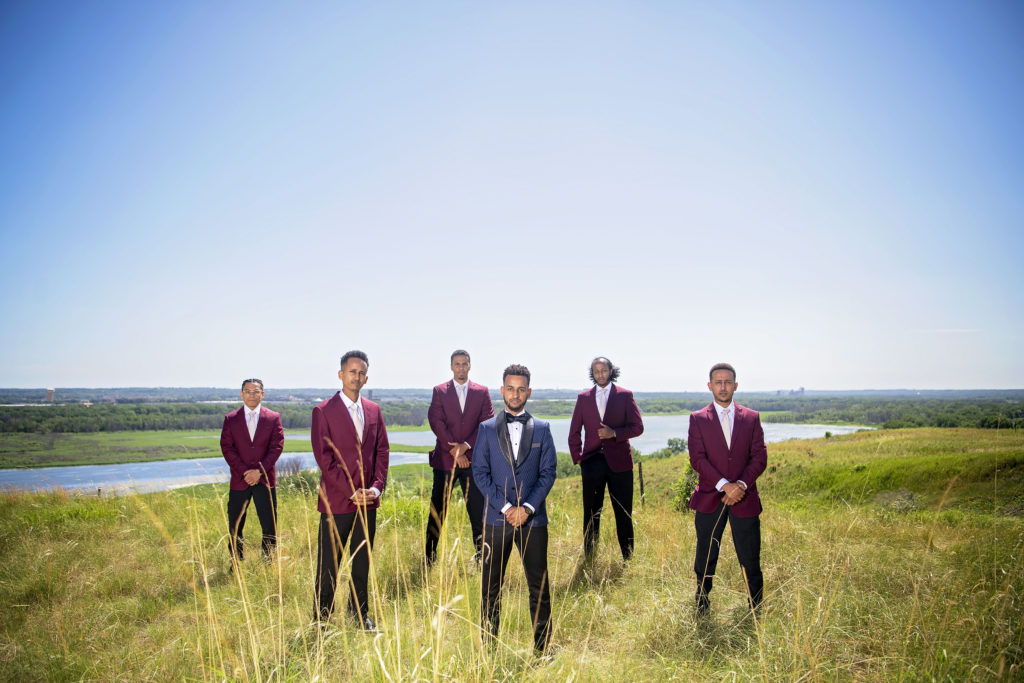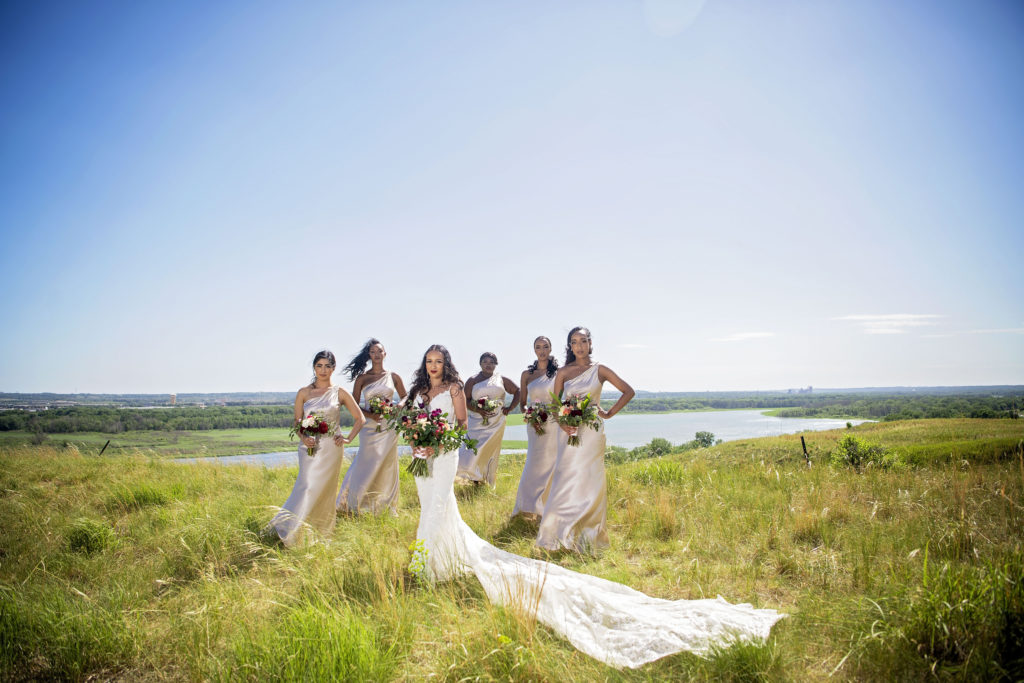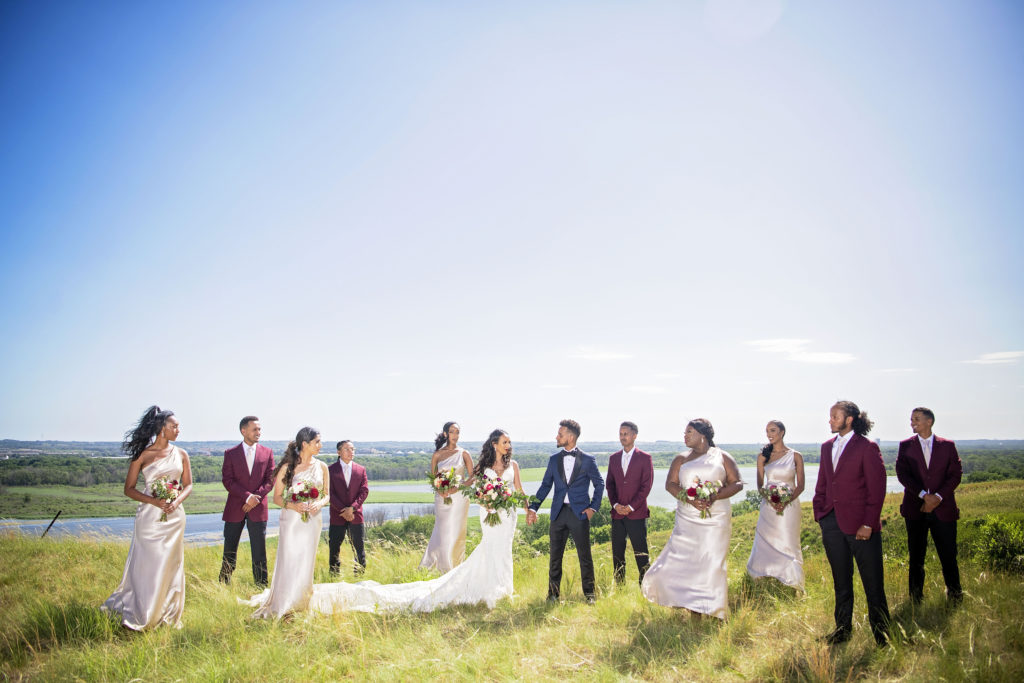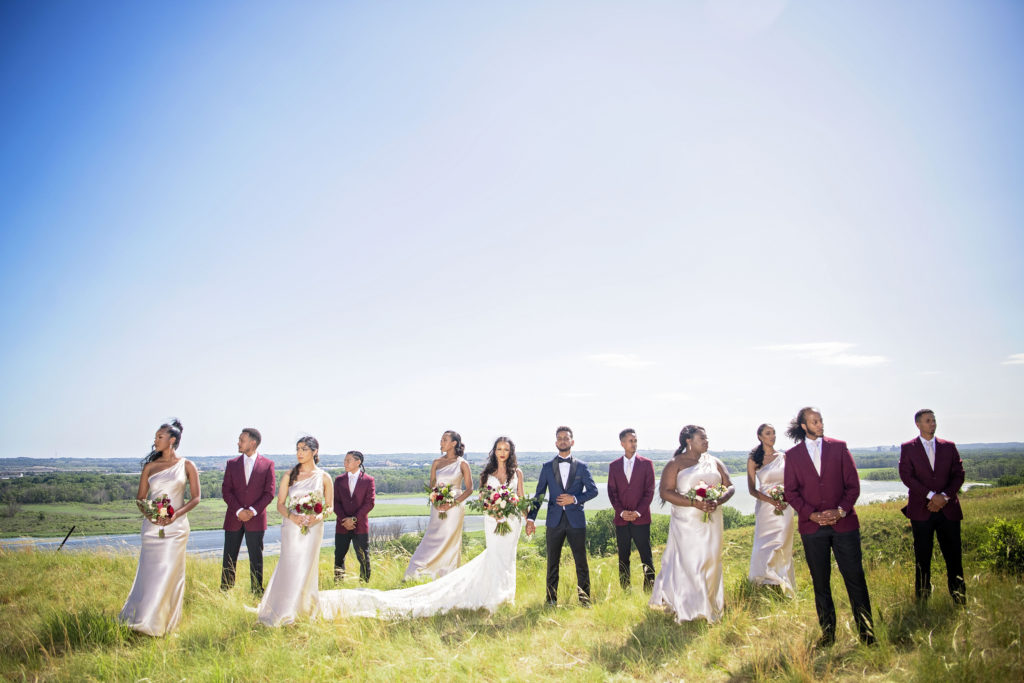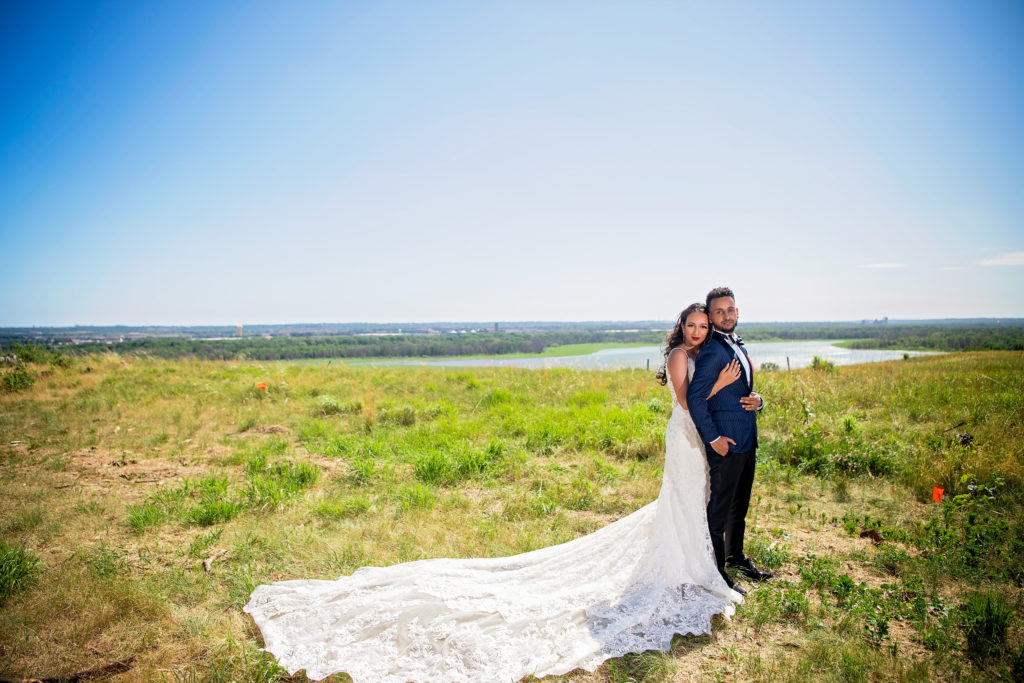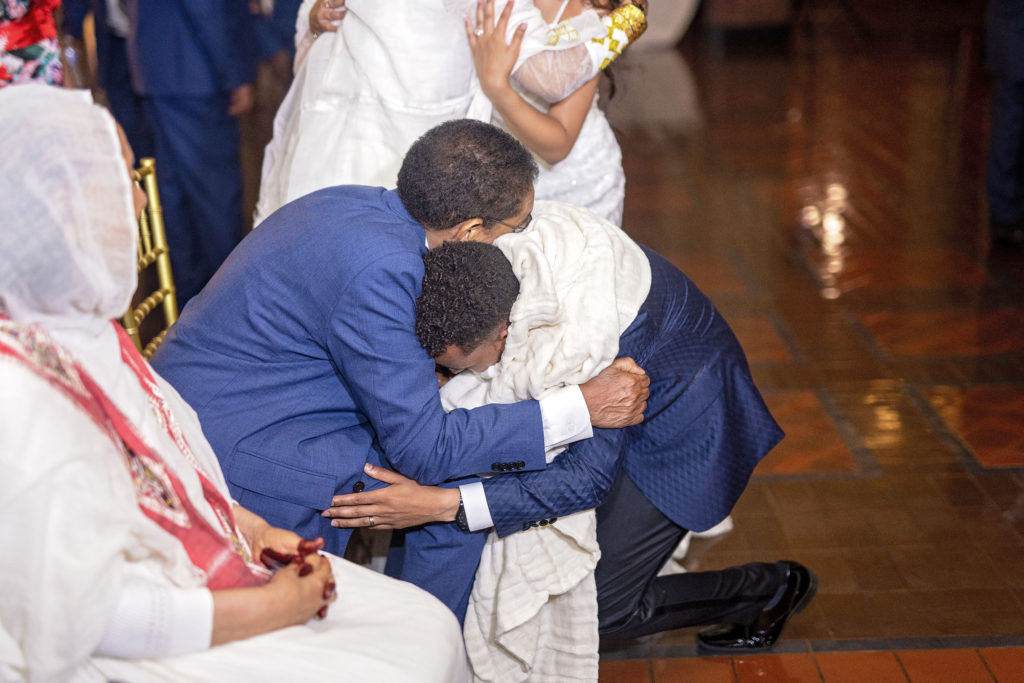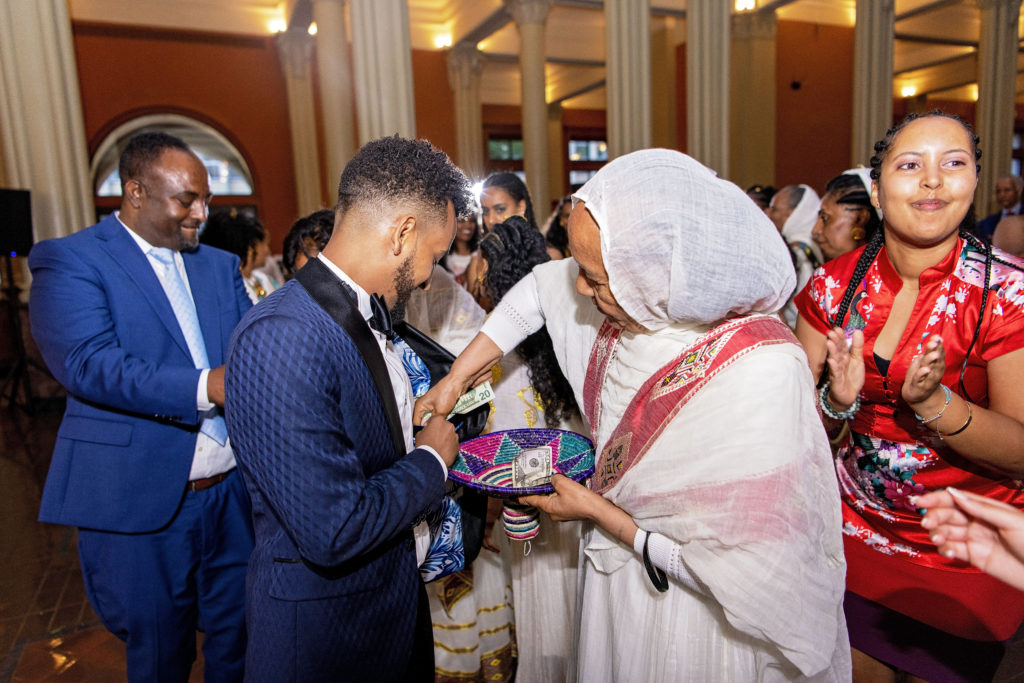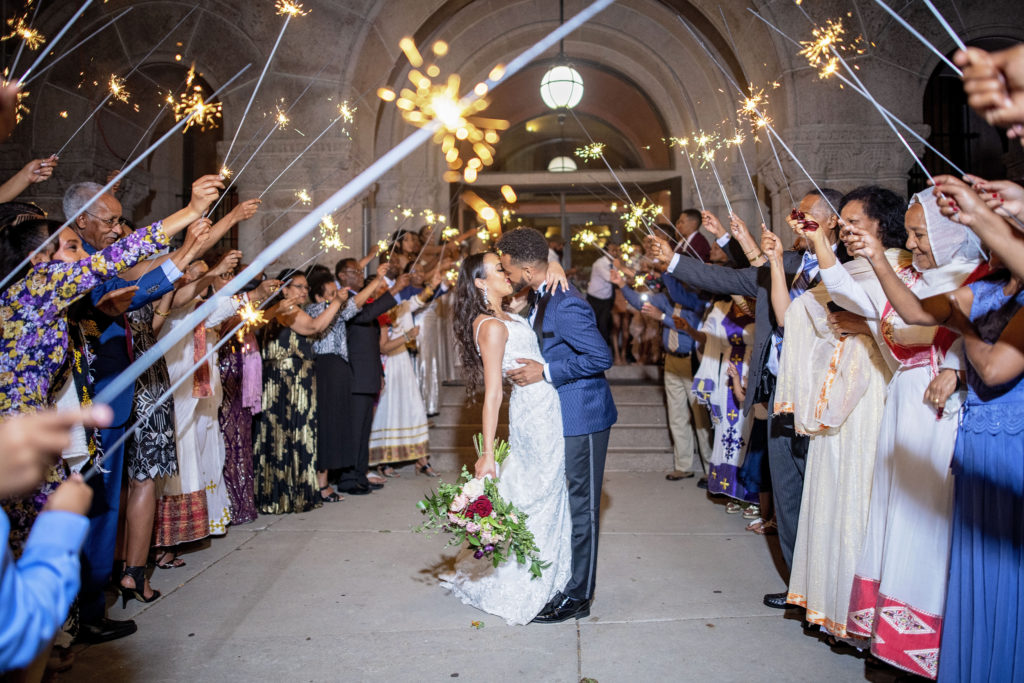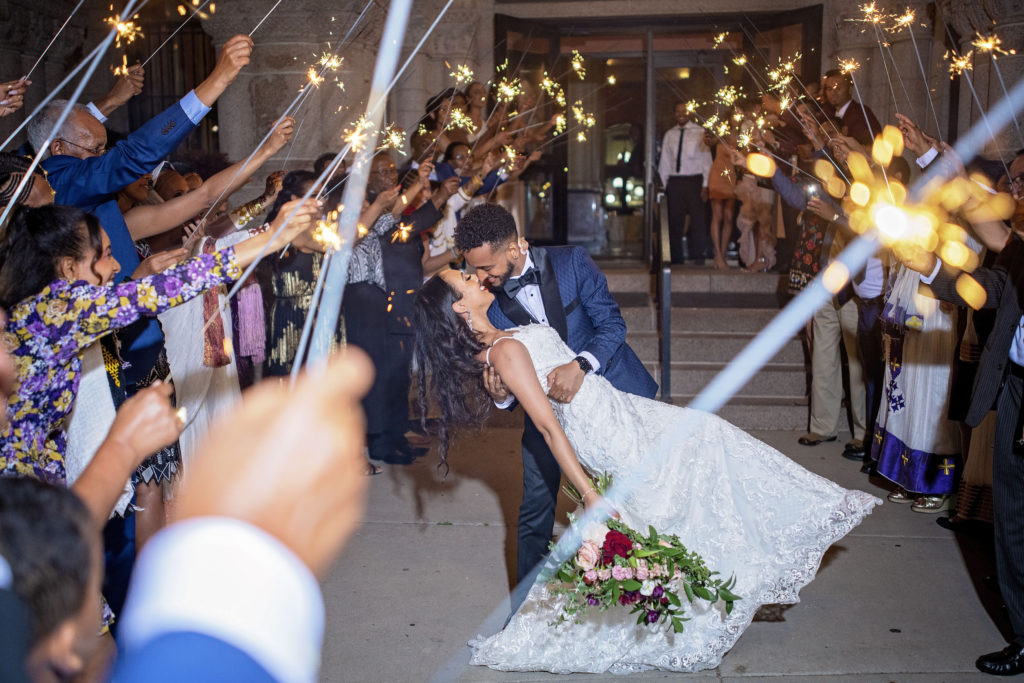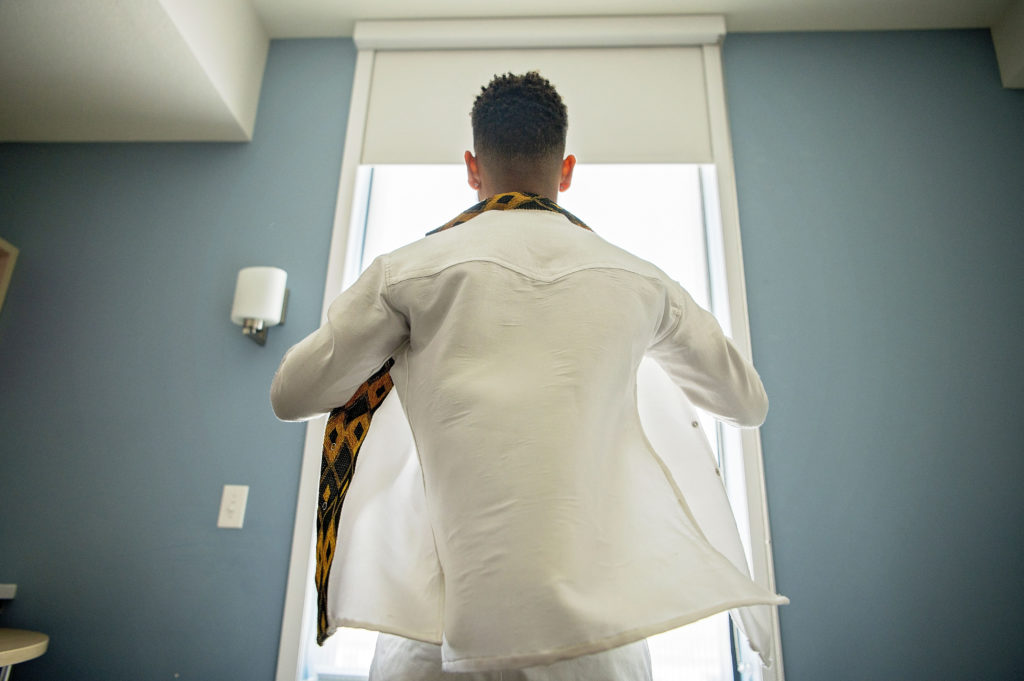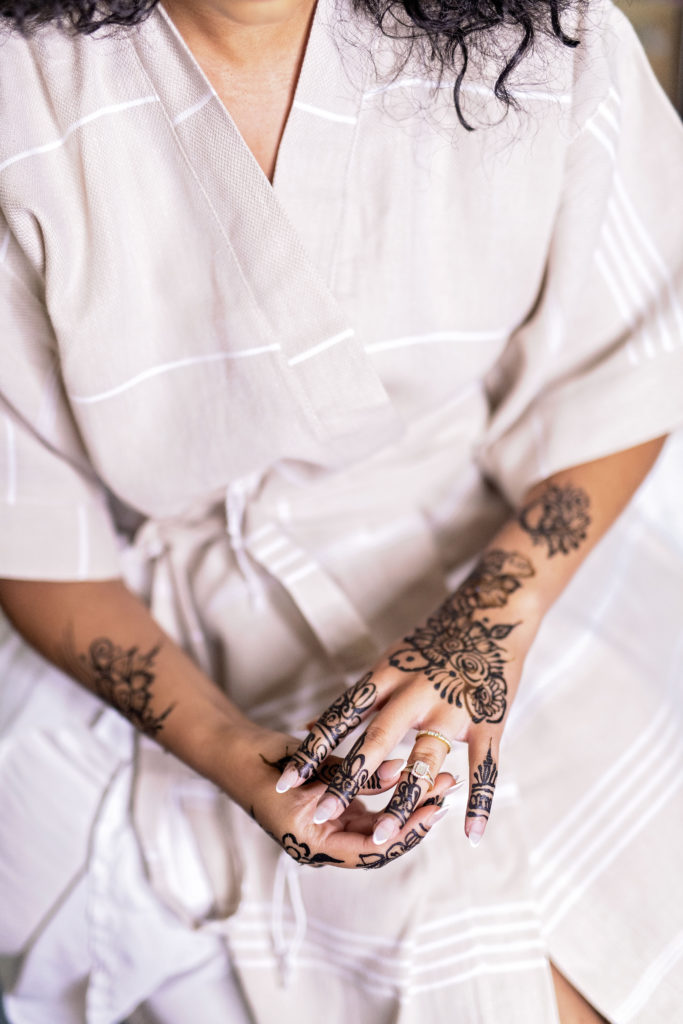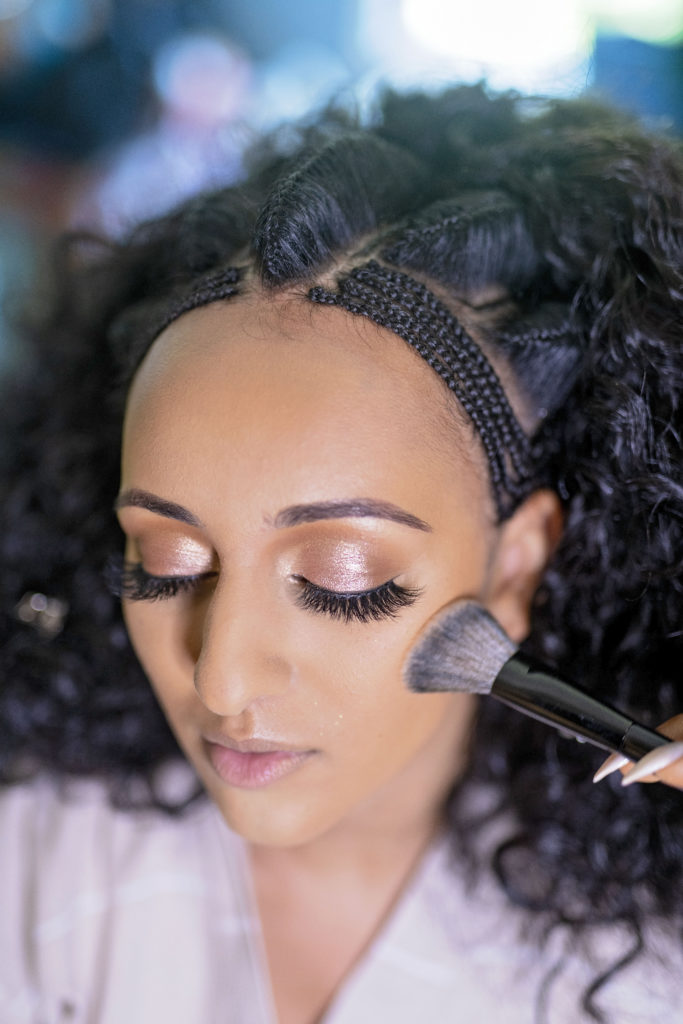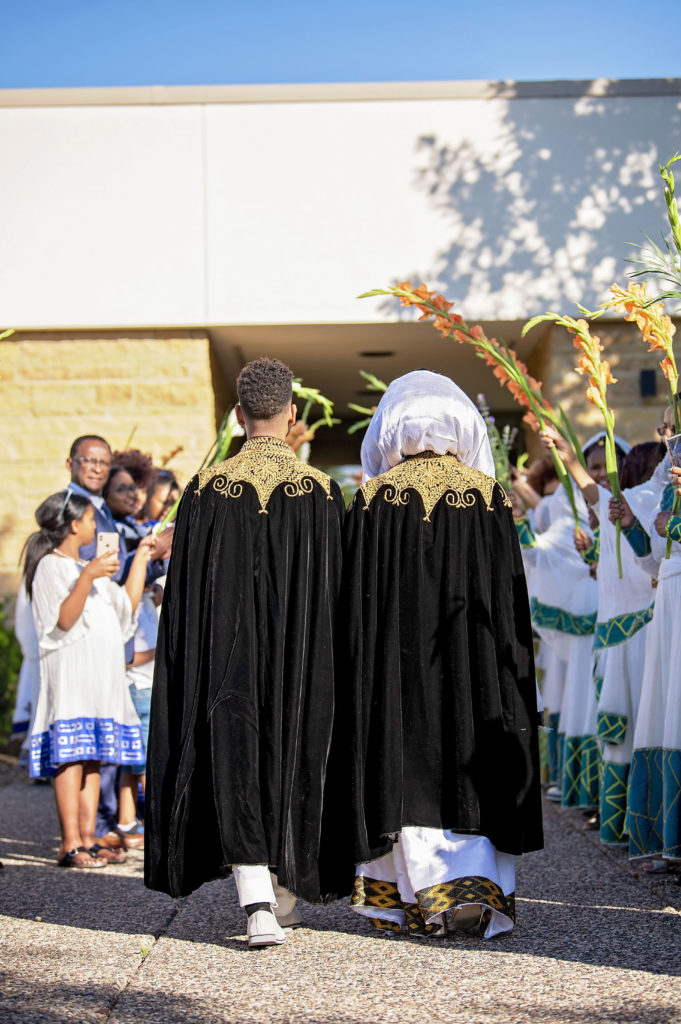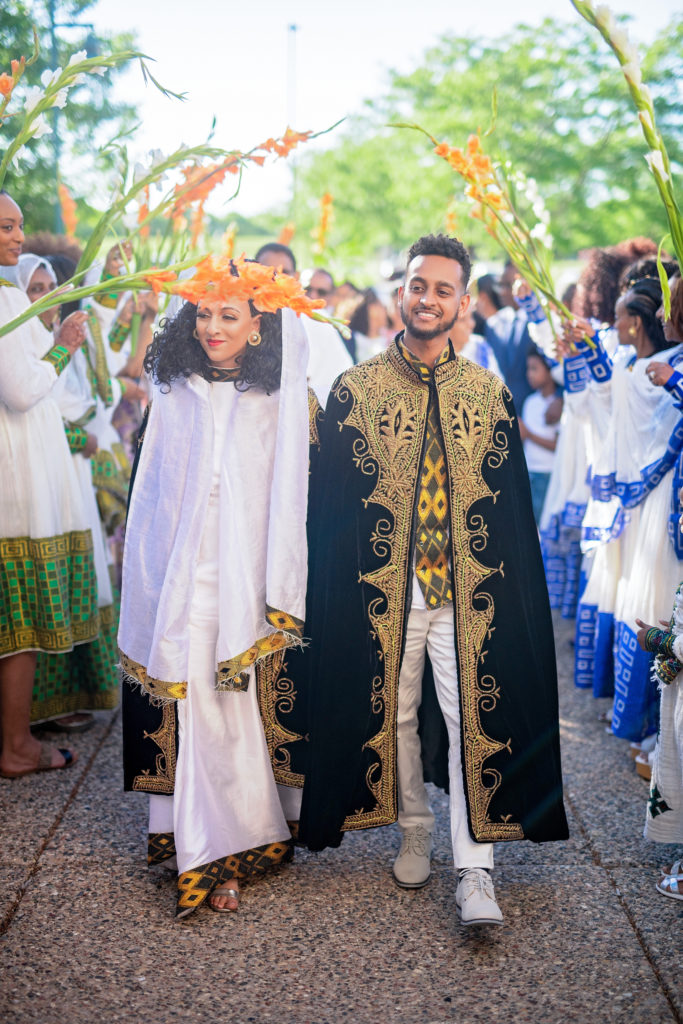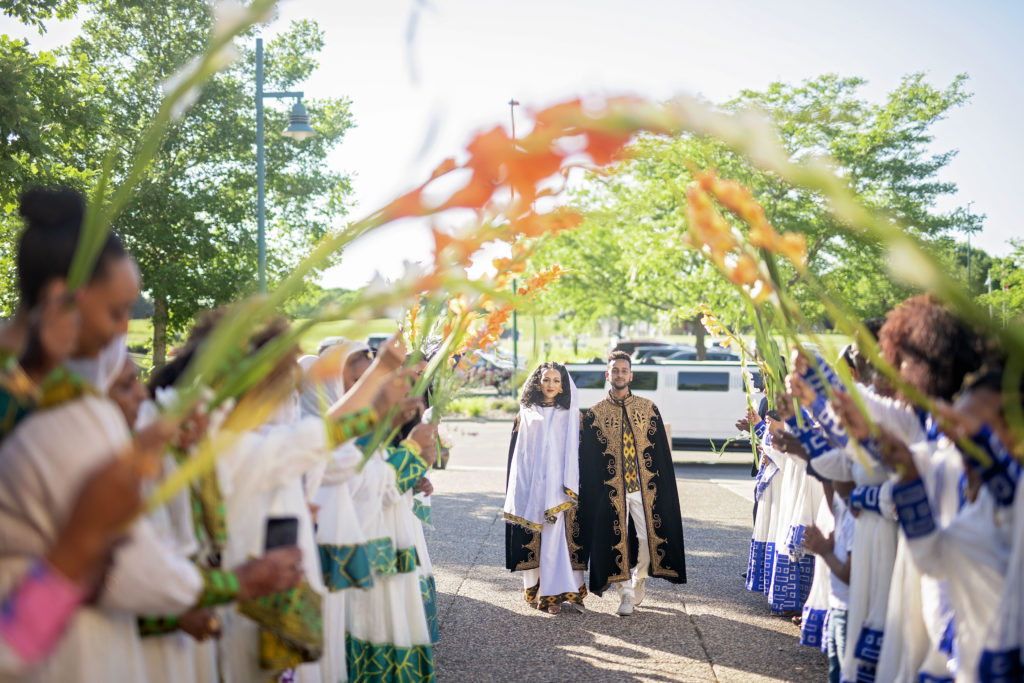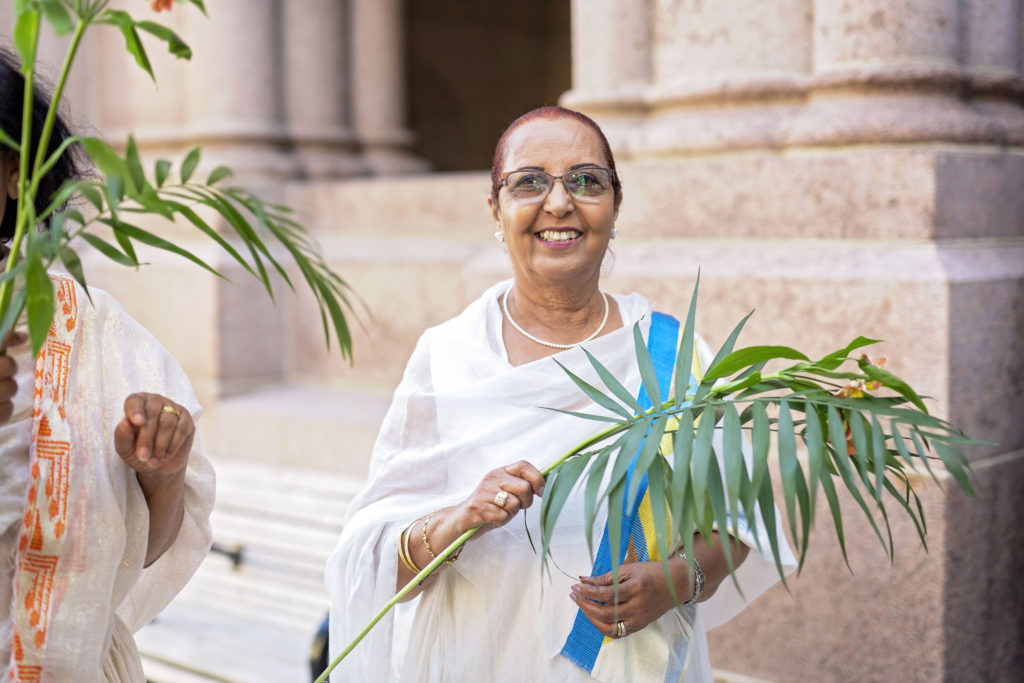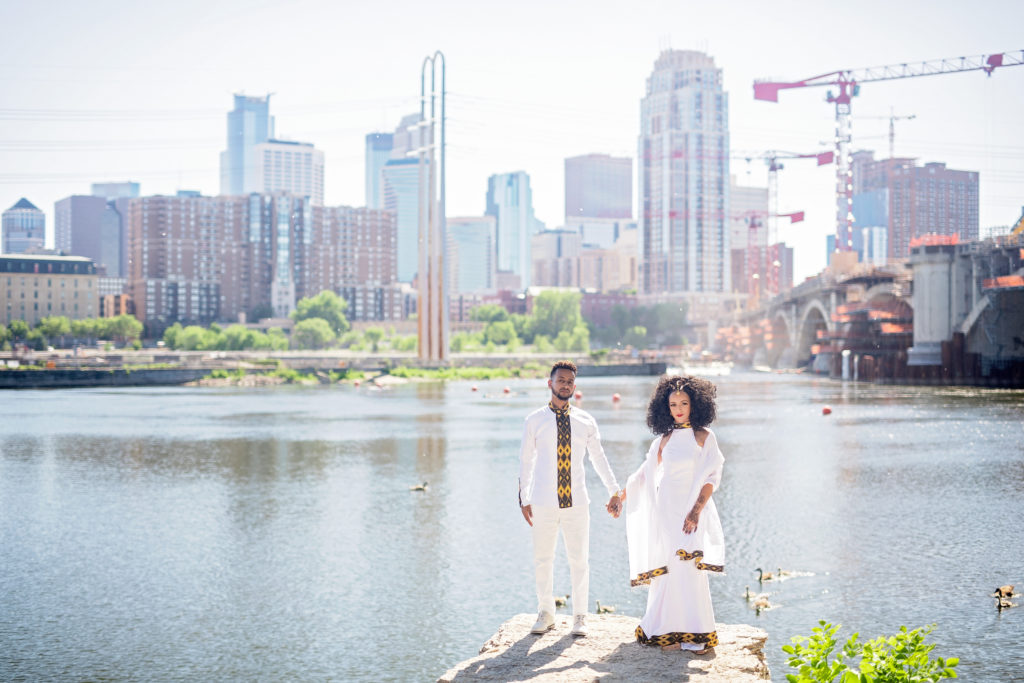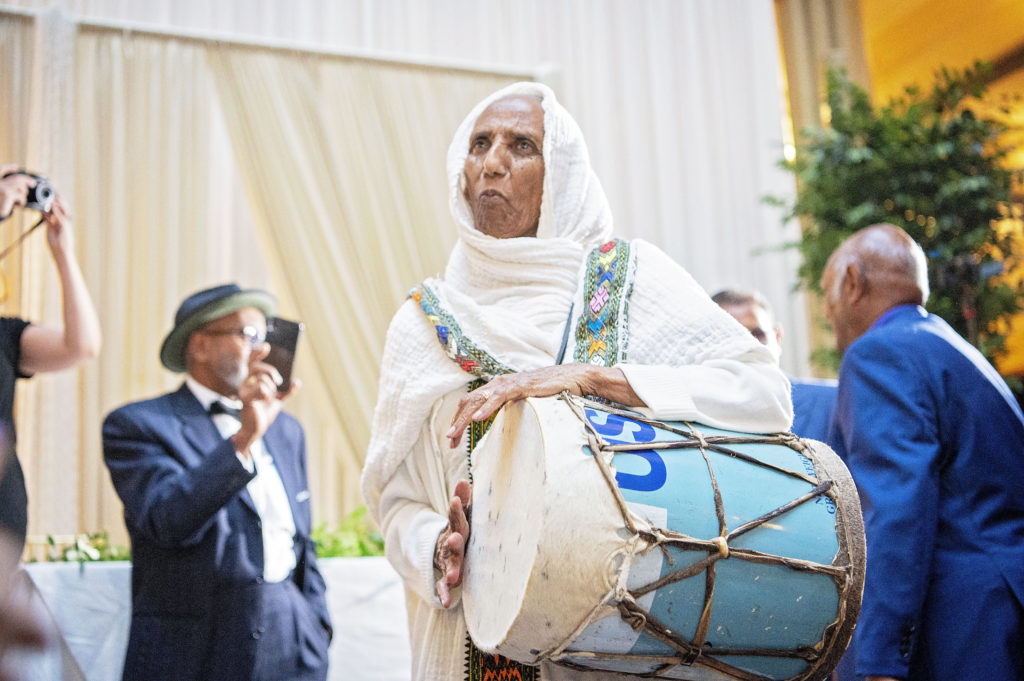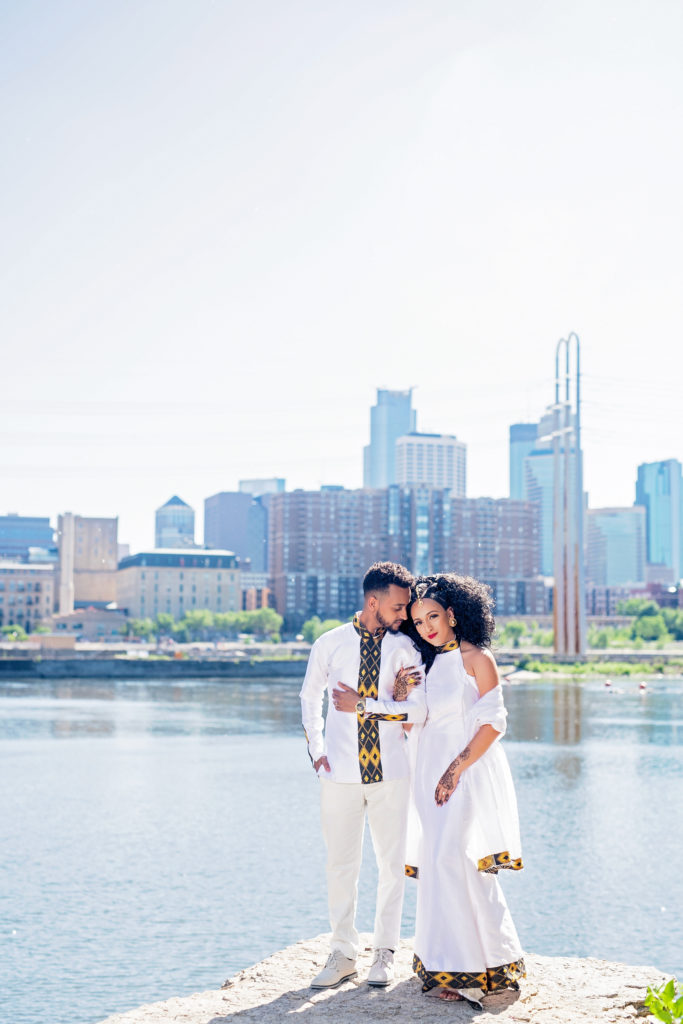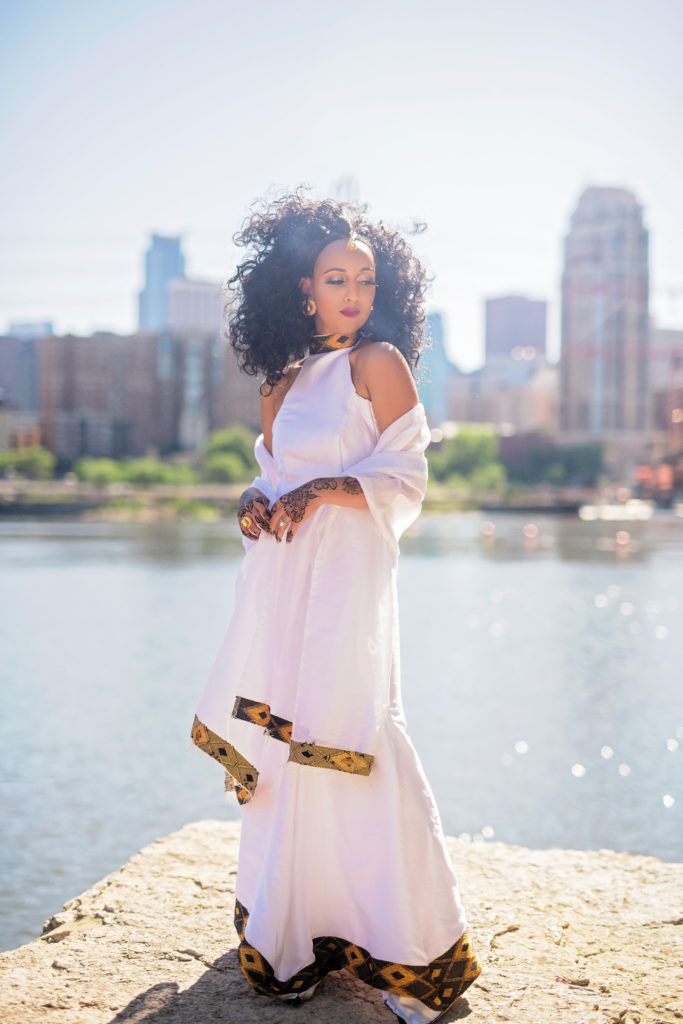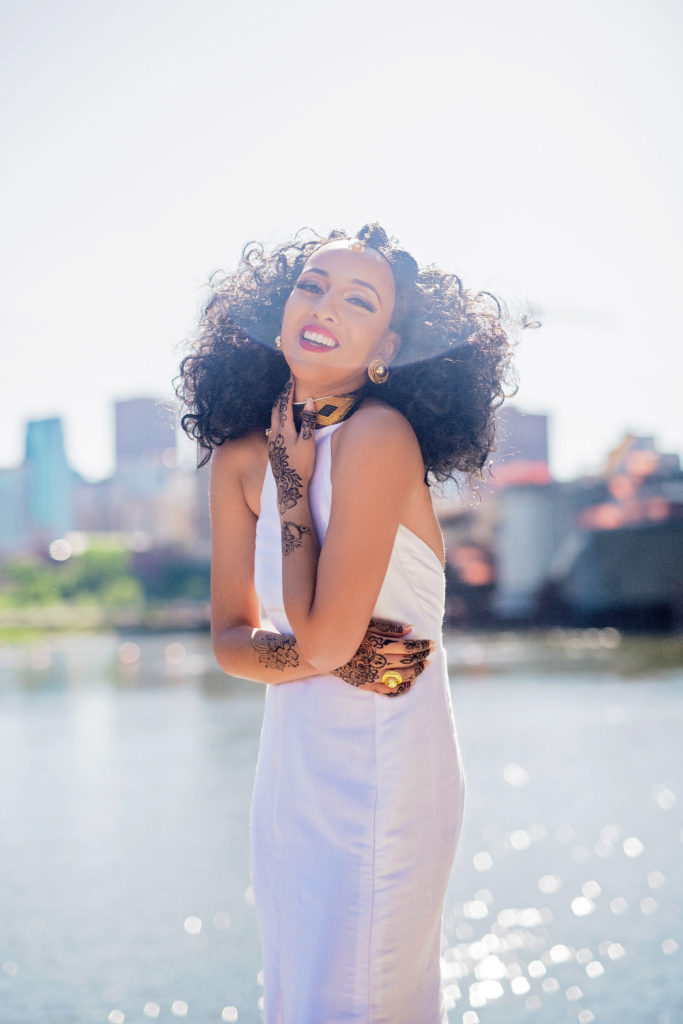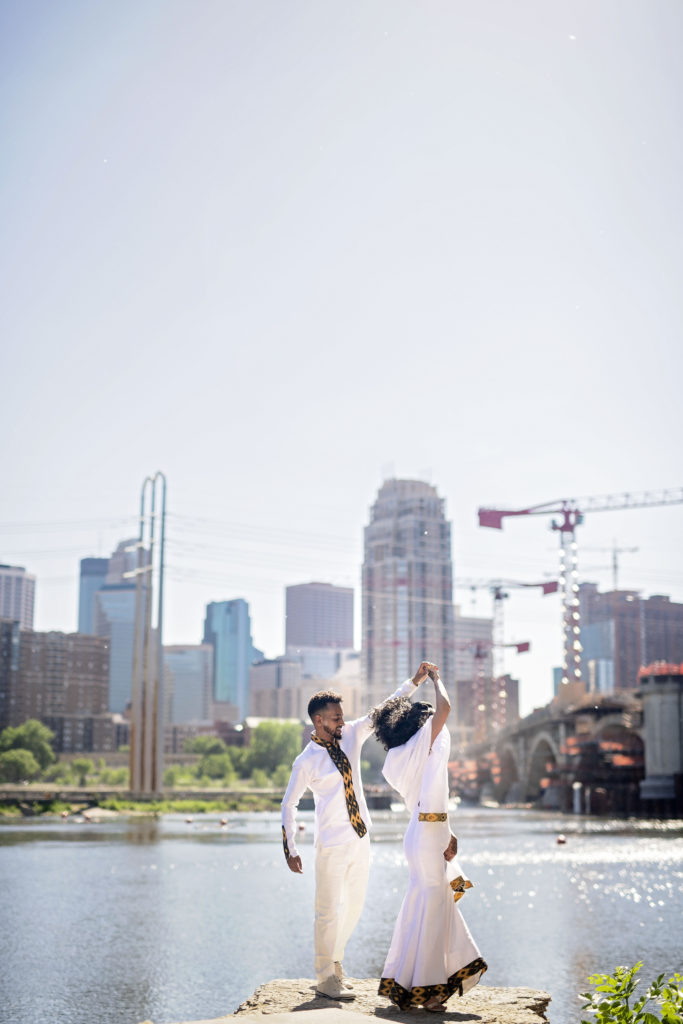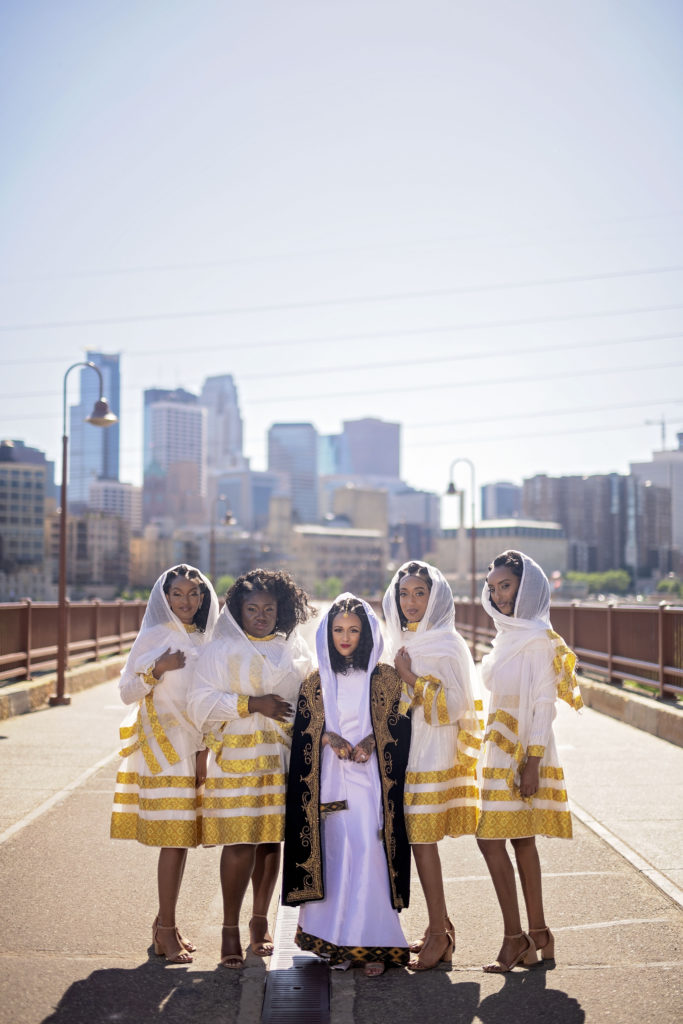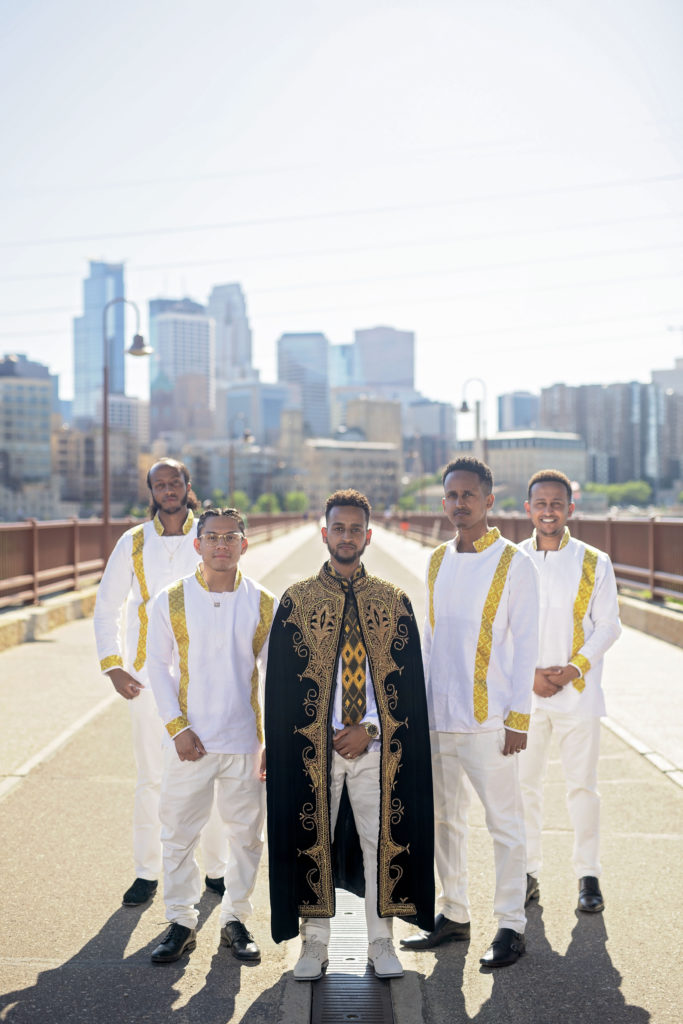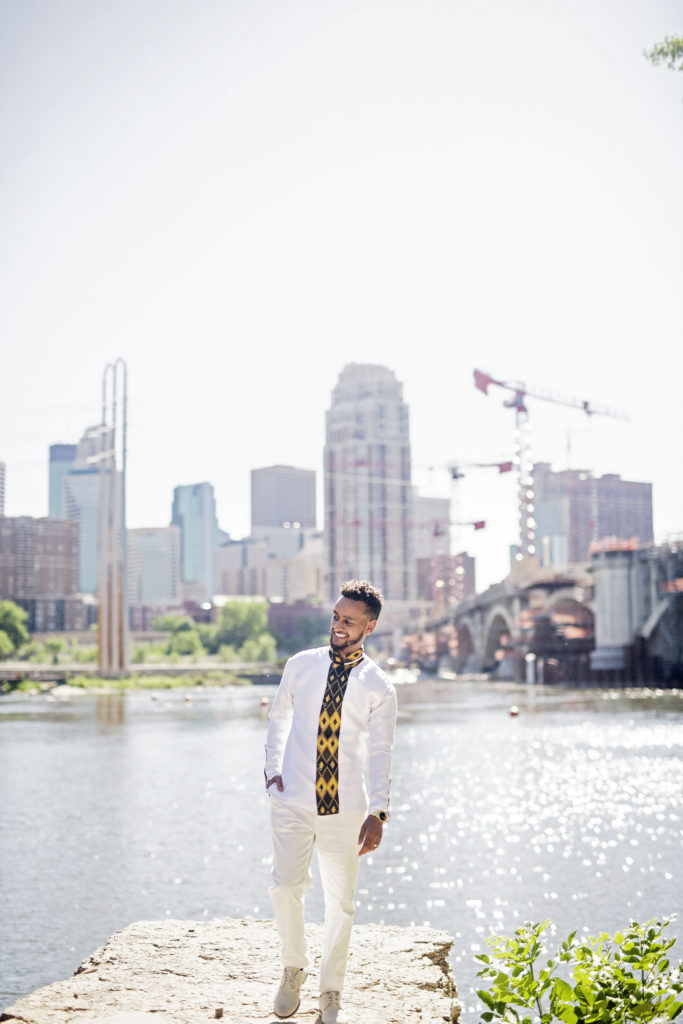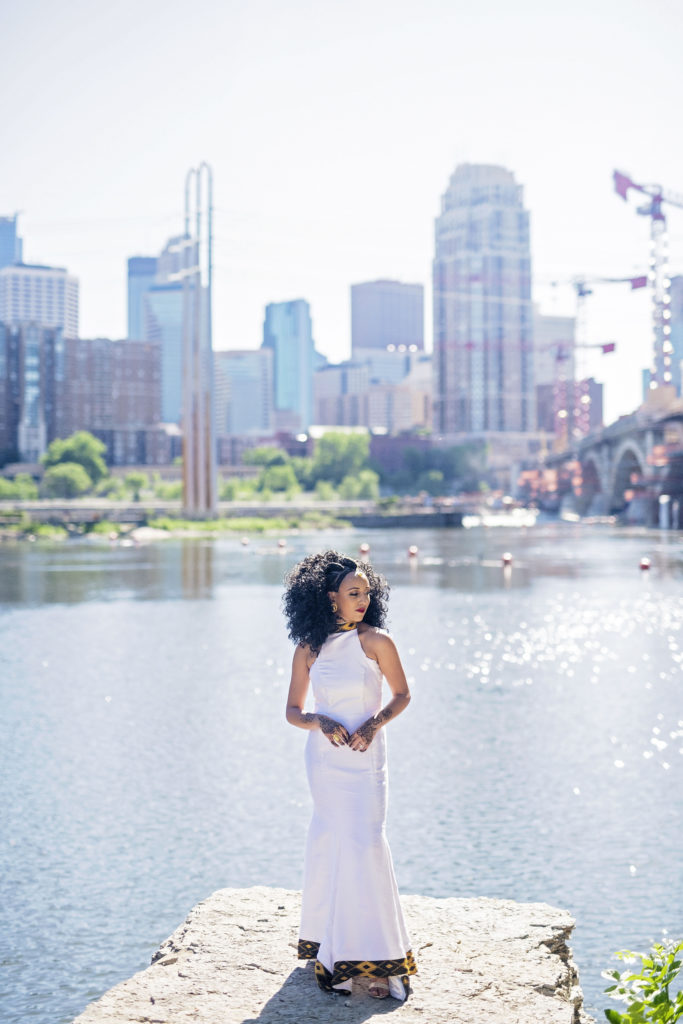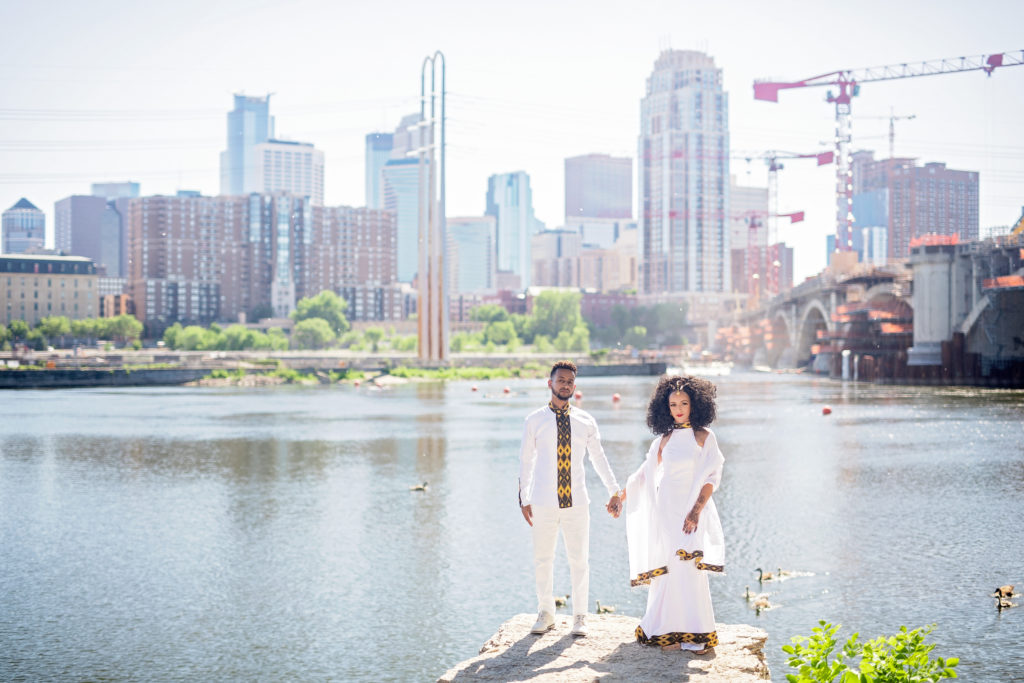
Asmeret and Milkias Traditional Ethiopian Wedding is an event every wedding photographer dreams of shooting! All three days were spent honoring Asmeret and Milkias’ love for one another, their families, and their Eritrean/Ethiopian culture. Read more to learn about the significance of each day photographed!
Ethiopian Wedding Traditions
Day One Traditions
The wedding weekend started with a Ethiopian Wedding tradition called “Telosh.” Telosh is traditionally 2 days before the wedding itself and takes place at the parents of the brides home. The groom, groomsman, and sometimes family members are greeted at the home by the parents of the bride and bridesmaids. At this point of the ceremony the groom then has to go through the parents and the bridesmaids to get to the bride. He then presents the bride with gifts and once (or if) she accepts the gifts he then whisks her away to the wedding ceremony.
The precession on the way to the ceremony is another key part of the Traditional Ethiopian Wedding activities. For Asmeret and Milkias they rented a large hummer limo and make their way around the city stopping for pictures which is custom for this part of the day.
Once bride and groom arrive at the venue they then proceed to have something close to a traditional western wedding ceremony with flower girls, wedding party processional, and the exchanging of vows.
Day Two
The events of day number two is similar to a reception. At the entrance of the venue families welcome the couple with singing and dancing with palms. Once inside the venue the couple proceeds to have what we would expect of a reception with first dances and speeches. I think one of my favorite parts personally was the exit process. Before the couple exits the venue they kneel before the elders to receive a blessing and then they make their way out where everyone blesses the couple.
Day Three
The last day the couple dresses in traditional Ethiopian attire and hold the concluding festivities (at least that we were a part of). The entrance into the venue is similar to the one the day before with waving palms and dancing. Once inside a traditional feast is held where the bride and groom feed one another for the duration of the meal.
The Bread Name
The main event of this day is when the bride receives her bread name from the mother of the groom. This is where the mother of the groom decides the nickname that the family will now call the bride from then on. It’s a whole event where the crowd shouts out ideas for the name and eventually the mother of the groom either chooses one of the suggested names or comes up with one of her own. The reason for the name “Bread Name” is that during the naming process the groomsmen have to find a loaf of bread that has been hidden through out the venue. If they can’t find it and bring it back they then have to pay the groom in cash on the spot.
This whole experience made me appreciate the beauty of traditions and how they are carefully passed down from one generation to the next. Josh and I are very passionate about legacy and what you teach/leave behind for the generation after you. Asmeret and Milkias’ wedding was a beautiful example of honoring one’s culture and starting a legacy. We’re so thankful that we had the honor of illustrating the beginning of their legacy through photos. That’s what makes photos so special in my opinion is how they preserve the story and journey of the legacy we each build over our lifetime.
If you’re interested in preserving your legacy through the gift of photos inquire with us using the button below!
